BANGALORE
BANGALORE
Bangalore is the capital and the largest city of the Indian state of Karnataka. It has a population of more than 8 million and a metropolitan population of around 11 million, making it the third most populous city and fifth most populous urban agglomeration in India. Located in southern India on the Deccan Plateau, at a height of over 900 m (3,000 ft) above sea level, Bangalore is known for its pleasant climate throughout the year. Its elevation is the highest among the major cities of India.
The city’s history dates back to around 890 CE, in a stone inscription found at the Nageshwara Temple in Begur, Bangalore. The Begur inscription is written in Halegannada (ancient Kannada), mentions ‘Bengaluru Kalaga’ (battle of Bengaluru). It was a significant turning point in the history of Bangalore as it bears the earliest reference to the name ‘Bengaluru’. In 1537 CE, Kempé Gowdā – a feudal ruler under the Vijayanagara Empire – established a mud fort considered to be the foundation of modern Bangalore and its oldest areas, or petes, which exist to the present day. After the fall of Vijayanagar empire in 16th century, the Mughals sold Bangalore to Chikkadevaraja Wodeyar (1673–1704), the then ruler of the Kingdom of Mysore for three lakh rupees. When Haider Ali seized control of the Kingdom of Mysore, the administration of Bangalore passed into his hands.
Bangalore is widely regarded as the “Silicon Valley of India” (or “IT capital of India”) because of its role as the nation’s leading information technology (IT) exporter. Indian technological organisations are headquartered in the city. A demographically diverse city, Bangalore is the second fastest-growing major metropolis in India. Recent estimates of the metro economy of its urban area have ranked Bangalore either the fourth- or fifth-most productive metro area of India. As of 2017, Bangalore was home to 7,700 millionaires and 8 billionaires with a total wealth of $320 billion. It is home to many educational and research institutions. Numerous state-owned aerospace and defence organisations are located in the city. The city also houses the Kannada film industry. It was ranked the most liveable Indian city with a population of over a million under the Ease of Living Index 2020.
HISTORY
The area around Delhi was probably inhabited before the second millennium BCE and there is evidence of continuous inhabitation since at least the 6th-century BCE. There was Ochre Coloured Pottery culture in Red fort area which began around c.2600 BCE. Around c.1200 BCE the region was inhabited by people of Painted Grey Ware culture and was part of Kuru Kingdom. The city is believed to be the site of Indraprastha, the legendary capital of the Pandavas in the Indian epic Mahabharata. According to the Mahabharata, this land was initially a huge mass of forests called ‘Khandavaprastha’ which was burnt down by the Pandavas to build the city of Indraprastha. Later Kurus were defeated by the non-Vedic Salva tribe.
The earliest architectural relics date back to the Maurya period (c. 300 BCE); in 1966, an inscription of the Mauryan Emperor Ashoka (273–235 BCE) was discovered near Srinivaspuri. Remains of several major cities can be found in Delhi. The first of these were in the southern part of present-day Delhi. King Anang Pal of the Tomara dynasty founded the city of Lal Kot in 1052 CE. Prithviraj Chauhan conquered Lal Kot in 1178 and renamed it Qila Rai Pithora.
GEOGRAPHY
Bangalore lies in the southeast of the South Indian state of Karnataka. It is in the heart of the Mysore Plateau (a region of the larger Cretaceous Deccan Plateau) at an average elevation of 900 m (2,953 ft).[64]: 8 It is located at 12°58′44″N 77°35′30″E and covers an area of 741 km2 (286 sq mi). The majority of the city of Bangalore lies in the Bangalore Urban district of Karnataka and the surrounding rural areas are a part of the Bangalore Rural district. The Government of Karnataka has carved out the new district of Ramanagara from the old Bangalore Rural district.
The topology of Bangalore is generally flat, though the western parts of the city are hilly. The highest point is Vidyaranyapura Doddabettahalli, which is 962 m (3,156 ft) and is situated to the north-west of the city. No major rivers run through the city, although the Arkavathi and South Pennar cross paths at the Nandi Hills, 60 km (37 mi) to the north. River Vrishabhavathi, a minor tributary of the Arkavathi, arises within the city at Basavanagudi and flows through the city. The rivers Arkavathi and Vrishabhavathi together carry much of Bangalore’s sewage. A sewerage system, constructed in 1922, covers 215 km2 (83 sq mi) of the city and connects with five sewage treatment centres located in the periphery of Bangalore.
ECONOMY

Bangalore is second fastest growing metropolis in India.[148] Bangalore contribute 38% of India’s total IT exports.[ It’s economy is primarily service oriented and industrialized. The economy of Bangalore is contributes by information technology, telecommunication, biotechnology, manufacturing and industries (electronics, machinery, electricals, automobiles, foods & beverages) sectors etc. Major industrial areas around Bangalore are Adugodi, Bidadi, Bommanahalli, Bommasandra, Domlur, Hoodi, Whitefield, Doddaballapura, Hoskote, Bashettihalli, Yelahanka, Electronic City, Peenya, Krishnarajapuram, Bellandur, Narasapura, Rajajinagar, Mahadevapura etc. Bangalore is one of the favorable business destinations. It is fifth city in India to host maximum numbers of Fortune Companies next to Mumbai, Delhi, Kolkata and Chennai.
The growth of IT has presented the city with unique challenges. Ideological clashes sometimes occur between the city’s IT moguls, who demand an improvement in the city’s infrastructure, and the state government, whose electoral base is primarily the people in rural Karnataka.The encouragement of high-tech industry in Bangalore, for example, has not favoured local employment development, but has instead increased land values and forced out small enterprise.
BANGALORE DISTRICT'S
Bangalore Urban district, officially known as, Bengaluru Nagara district , is a district in the Indian state of Karnataka. It is surrounded by the Bangalore Rural district on the east and north, the Ramanagara district on the west and the Krishnagiri district of Tamil Nadu on the south. Bangalore Urban district came into being in 1986, with the partition of the erstwhile Bangalore district into Bangalore Urban and Bangalore Rural districts. Bangalore Urban has five taluks: Bangalore North (Bengaluru), Bangalore South (Kengeri), Bangalore East (Krishnaraja Pura), Yelahanka and Anekal.[citation needed] The city of Bangalore is situated in the Bangalore Urban district. The district has 17 hoblies, 668 villages, 9 municipal corporations, and five talukas. Electronics City is situated in Anekal Taluka.
The district had a population of 6,537,124 of which 88.11% is urban as of 2001. As of Census 2011, its population has increased to 9,621,551, with a sex-ratio of 908 females/males, the lowest in the state and its density is 4,378 people per square km.

more info
Bengaluru, also spelled Bengalooru, formerly Bangalore, city, capital (since 1830) of Karnataka state, southern India. Bengaluru is one of India’s largest cities. It lies 3,113 feet (949 metres) above sea level, atop an east-west ridge in the Karnataka Plateau in the southeastern part of the state, at a cultural meeting point of the Kannada-, Telugu-, and Tamil-speaking peoples. Pop. (2001) city, 4,301,326; urban agglom., 5,701,446; (2011) city, 8,443,675; urban agglom., 8,520,435.
Bengaluru has pleasant summers and mild winters. Summer temperatures average in the low to mid-90s F (about 34 °C), and winter temperatures rarely drop below 60 °F (16 °C). The city receives about 36 inches (914 mm) of annual rainfall, which has been inadequate as a water supply for its increasing population and industry. Most of the city’s water comes from the Kaveri (Cauvery) River, about 45 miles (70 km) to the south. The municipal government has undertaken projects to develop more reservoir lakes in the city and to reuse water.
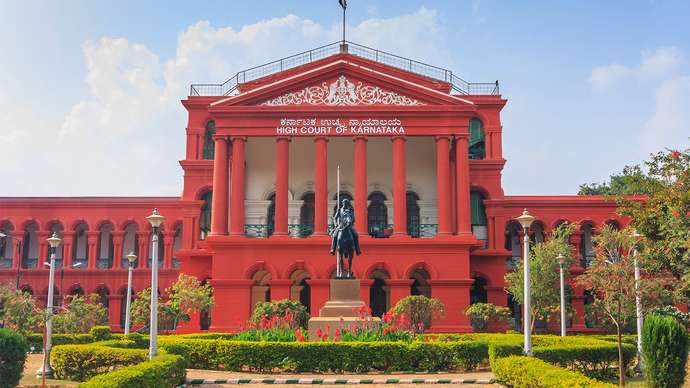
demographics
The estimated population of Bangalore city for mid year 1957 was 11,76,000 and for mid-year 1958, it was 12,54,000.[85] With a population of 8,443,675 in the city and 10,456,000 in the urban agglomeration,[8][7] up from 8.5 million at the 2011 census,[86] Bangalore is a megacity, and the third-most-populous city in India and the 18th-most-populous city in the world.[87] Bangalore was the fastest-growing Indian metropolis after New Delhi between 1991 and 2001, with a growth rate of 38% during the decade. Residents of Bangalore are referred to as “Bangaloreans” in English, Bengaloorinavaru or Bengaloorigaru in Kannada and Banglori in Hindi or Urdu.[88] People from other states have migrated to Bangalore, study, or work there as well.
According to the 2011 census of India, 78.9% of Bangalore’s population is Hindu, a little less than the national average.[90] Muslims comprise 13.9% of the population, roughly the same as their national average. Christians and Jains account for 5.6% and 1.0% of the population, respectively, double that of their national averages. The city has a literacy rate of 89%.[91] Roughly 10% of Bangalore’s population lives in slums.
| Population growth | |||
|---|---|---|---|
| Census | Population | %± | |
| 1941 | 406,760 | — | |
| 1951 | 778,977 | 91.5% | |
| 1961 | 1,207,000 | 54.9% | |
| 1971 | 1,654,000 | 37.0% | |
| 1981 | 2,922,000 | 76.7% | |
| 1991 | 4,130,000 | 41.3% | |
| 2001 | 5,101,000 | 23.5% | |
| 2011 | 8,425,970 | 65.2% | |
transport
namma metro(rail)
A rapid transit system called the Namma Metro is being built in stages. Initially opened with the 7 km (4.3 mi) stretch from Baiyappanahalli to MG Road in 2011,[180] phase 1 covering a distance of 42.30 km (26.28 mi) for the north–south and east–west lines was made operational in June 2017.
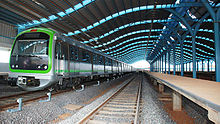
road
Buses operated by Bangalore Metropolitan Transport Corporation (BMTC) are an important and reliable means of public transport available in the city. While commuters can buy tickets on boarding these buses, BMTC also provides an option of a bus pass to frequent users. BMTC runs air-conditioned luxury buses on major routes, and also operates shuttle services from various parts of the city to Kempegowda International Airport. The BMTC also has a mobile app that provides real-time location of a bus using the global positioning system of the user’s mobile device.
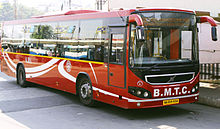
AIRPORT
Bangalore is served by Kempegowda International Airport (IATA: BLR, ICAO: VOBL), located at Devanahalli, about 40 km (25 mi) from the city centre. It was formerly called Bangalore International Airport. The airport started operations from 24 May 2008 and is a private airport managed by a consortium led by the GVK Group.

RESEDENTIAL AREAS
BLANK MAM

MARKET(kr Market)
KR Market is a busy, vibrant and crowded market in the heart of the city. Go early in the morning to watch fresh vegetables and flowers arrive for the day. A photographer’s delight, this market whips up a frenzy especially before important religious festivals.
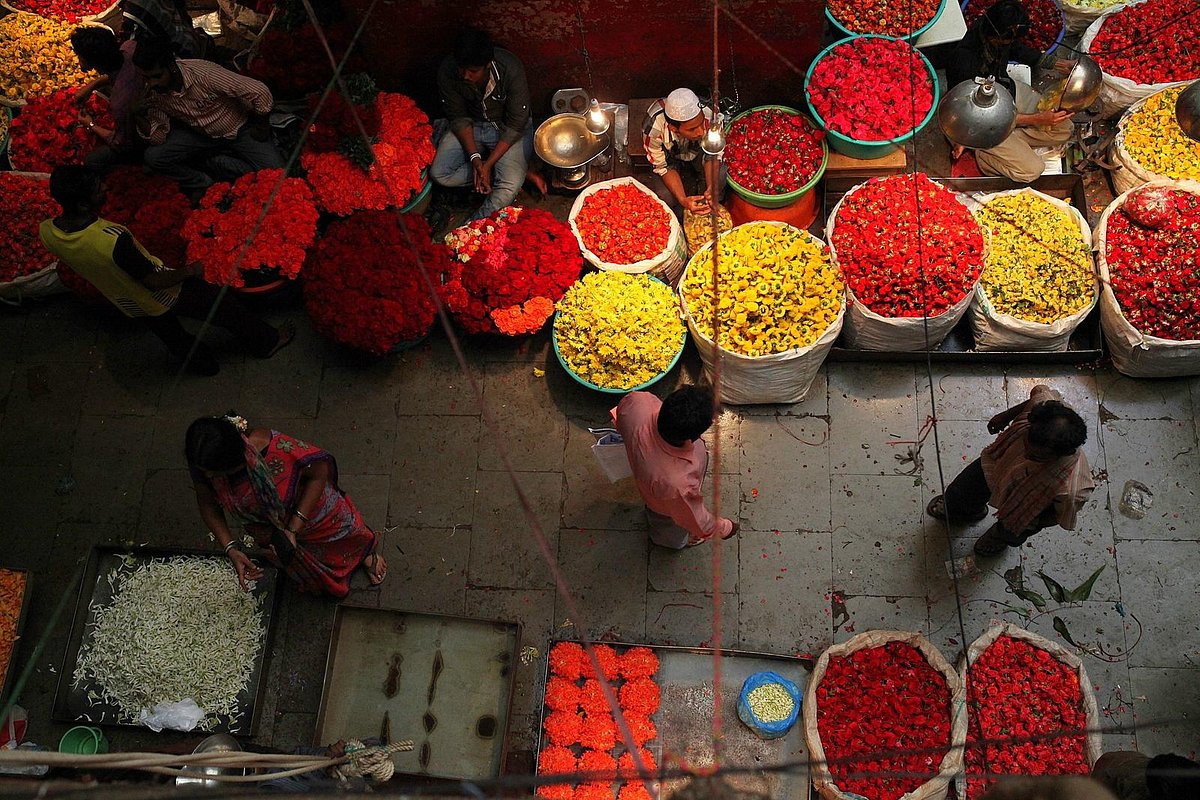
SHOPPING MALL (phoenix marketCITY MALL)
Phoenix Marketcity is a shopping mall developed by The Phoenix Mills Co. Ltd., located in Bengaluru, Karnataka, India.
It is the largest mall in Bangalore by area and occupying 1,400,000 square feet (130,000 m2) built-up area[3] with 1,000,000 square feet (93,000 m2) of retail space[2] on four floors, which houses 296 stores,[2] a nine-screen PVR Cinemas multiplex[4] and a food court.
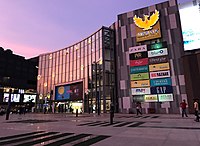
MOVIE THREATERS
Plaza was a film theatre located in the city of Bangalore, India. It used to be on M. G. Road in the Bangalore Cantonment area. It was built in 1936 and mostly screened Hollywood movies.
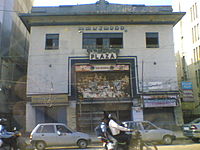
PARKS
Cubbon Park, officially known as Sri Chamarajendra Park,[1] is a landmark ‘lung’ area of Bengaluru city, located (12.97°N 77.6°E) within the heart of the city in the Central Administrative Area. Originally created in 1870, when Major General Richard Sankey was the then British Chief Engineer of Mysore state, it covered an area of 100 acres (0.40 km2) and subsequent expansion has taken place and the area reported now is about 300 acres (1.2 km2).
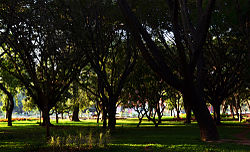
HOSPITALS
Victoria Hospital is a government run hospital affiliated with Bangalore Medical College now renamed Bangalore Medical College and Research Institute. It is the largest hospital in Bangalore, India. Started by Shri Krishnaraja Wodeyar, the then Maharaja of Mysore in 1901, the hospital soon rose to be among the prominent hospitals in South India. Dr. Padmanabhan Palpu, a famous doctor and bacteriologist from Kerala was instrumental in setting up the hospital.

bangalore LOCAL AREAS
Around Railway Station
Begur Kopa Road
Doddaballapur Road
Electronic City
Hebbal
Hesaraghatta
Hoskote
Hosur
Hosur Road
Indiranagar
International Airport
Jayanagar
JP Nagar
Kaggalipura
KGA Golf Course
Koramangala
Krishnarajapuram
Kundana
Langford Town
Malleswaram
Marathahalli
MG Road
Minerva Circle
Mysore Road
Palace Grounds
Race Course Road
Rajajinagar
Seshadripuram
Shivaji Nagar
Tumkur Road
Ulsoor Lake
Vasanth Nagar
Whitefield
Yelahanka
Yelahanka Devanhalli Road
Baiyappanhalli Metro Station
Bangalore Cantonment
Railway Station
Bangalore City Junction
Bangalore Palace
Bannerghatta National Park Bangalore
BIEC – Bangalore International Exhibition Centre
Bowring and Lady Curzon Hospital
Dodda Ganpati Temple
Fortis Hospital Bangalore
Garuda Mall
HAL Aerospace Museum
HAL Airport
Halasuru Metro Station
Hesaraghatta Lake
Indira Gandhi Musical Garden
Indiranagar Metro Station
Inorbit Mall Whitefield
ISKCON Temple Bangalore
Jawaharlal Nehru Planetarium
Kadu Malleshwara Temple
Kempegowda Bus Station (Majestic)
Kempegowda International AirportBallur
Banashankari 6th Stage
Bangalore- Hyderabad Highway Road
Banashankari 5th Stage
Banashankari 3rd Stage
Banashankari
Banashankari 2nd Stage
Ayyappa Nagar
Attur Layout
Amrutha Halli
Mantri Square Mall
Mantri Square Sampige Road Metro Station
Nageshwara Temple
Narayana Hrudayalaya Whitefield
Orion Mall
Peenya Industry Metro Station
Peenya Metro Station
Phoenix Market City Whitefield
Rajajinagar Metro Station
Royal Meenakshi Mall
Sandal Soap Factory Metro Station
Santosh Hospital
Srirampura Metro Station
St Mary’s Basilica
St. Martha’s Narayana Heart Centre
St. Philomena’s Hospital
St.John’s Medical College Hospital
Suryanarayana Temple
Swami Vivekananda Road Metro Station
The Forum Mall Kormangala
The Forum Value Mall Whitefield
Trinity Metro Station
Vidhana Soudha
Yellamma Dasappa Hospital
Yeshwanthpur Industry Metro Station
Yeshwanthpur Metro Station
Yesvantpur Junction Railway Station
Kuvempu Road Metro Station
Mahalakshmi Metro Station
Mahatma Gandhi Road Metro Station
Mallya Hospital
Chintamani
Chinnapa Garden
Chinnapanna Halli
Cottonpete
CQAL Layout
Dasarahalli Main Road
Dayananda Nagar
Dasanapura
Dabaspete
Craig Park Layout
Cunningham Road
Budigere Road
Budigere Cross
Bagaluru
Bagepalli
Baiyyappanahalli
Bagalur Road
Bagalur Main Road
B Narayanapura
Babusa Palya
Balagere
Ambedkar Veedhi
Ajjagondahalli
Adakamaranahalli
AECS Layout
Ananth Nagar
Anekal
Attibele
Attibele – Anekal Road
Ashirvad Colony
Arasanakunte
Anekal – Hosur Road
WE HELP YOU TO SELL
PHONE
+91-7558348349
info@retailmarketing.co.in
ADDRESS
:- Shriram Niwas, 261, Bahirat Galli, Gaothan, Shivajinagar, Pune, Maharashtra 411005 :- infinity mall, Phase D, Shastri Nagar, Andheri West, Mumbai, Maharashtra 400047 :- Haware Fantasia Business Park, 47, near, Inorbit Bypass, Sector 30A, Vashi, Navi Mumbai, Maharashtra 400703

